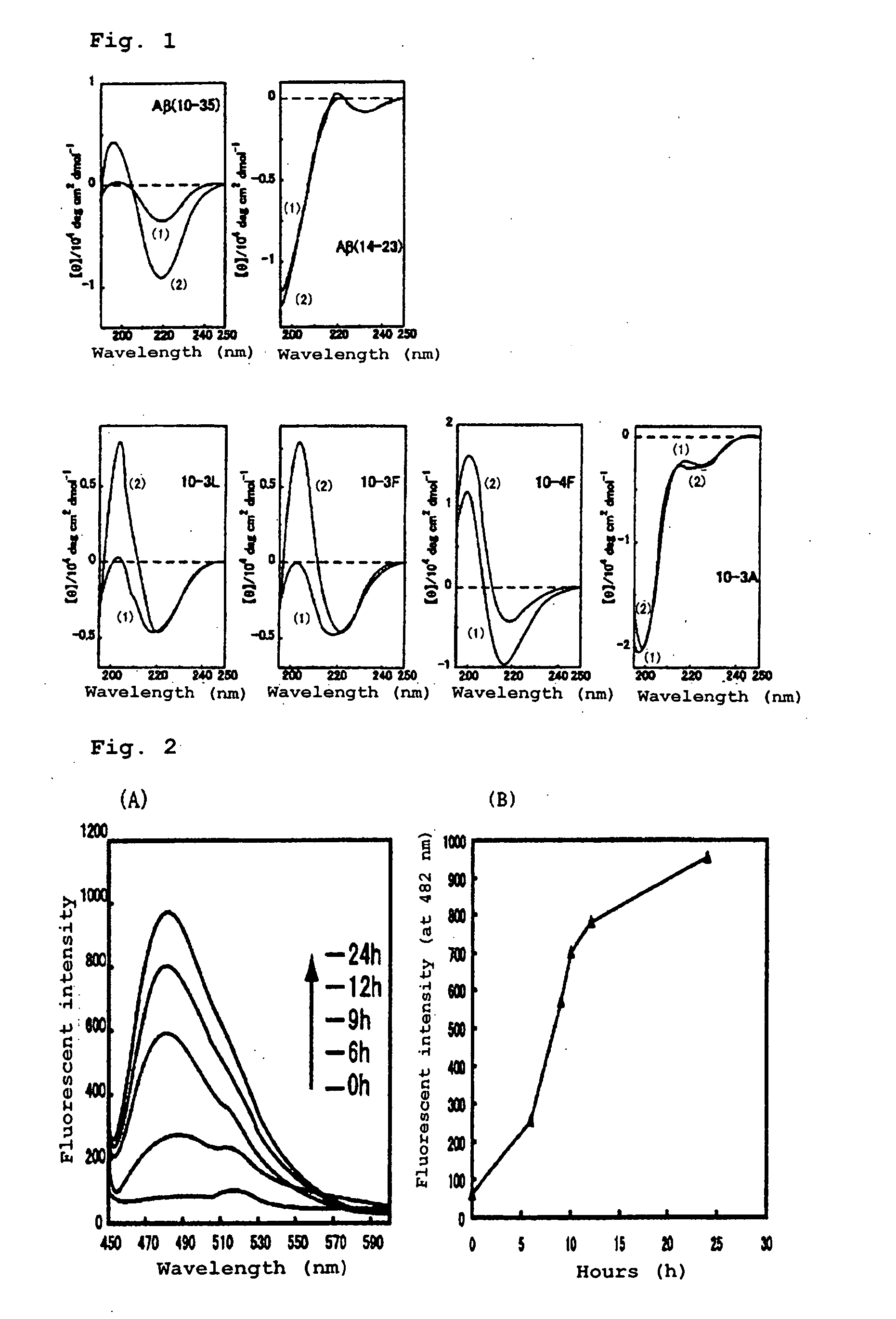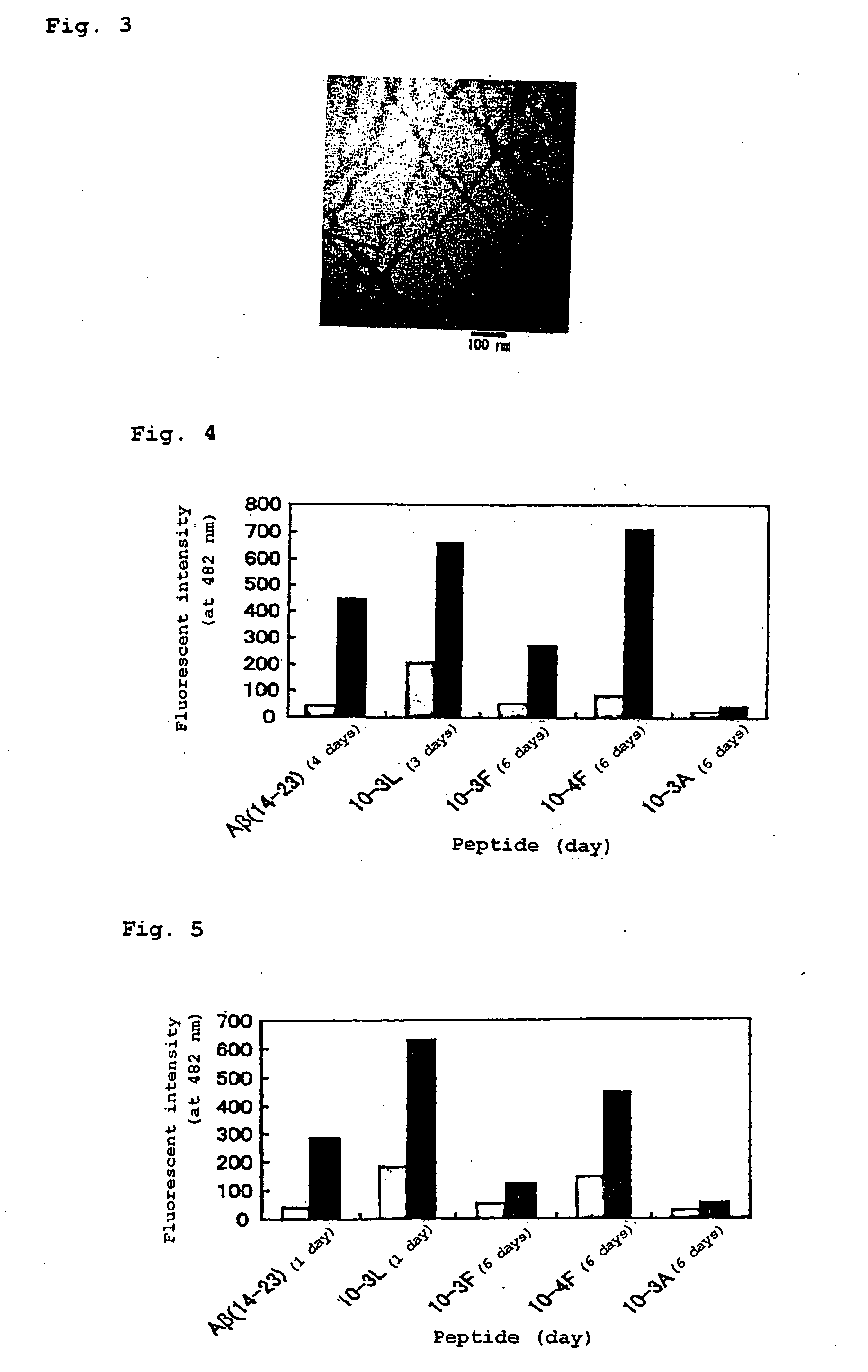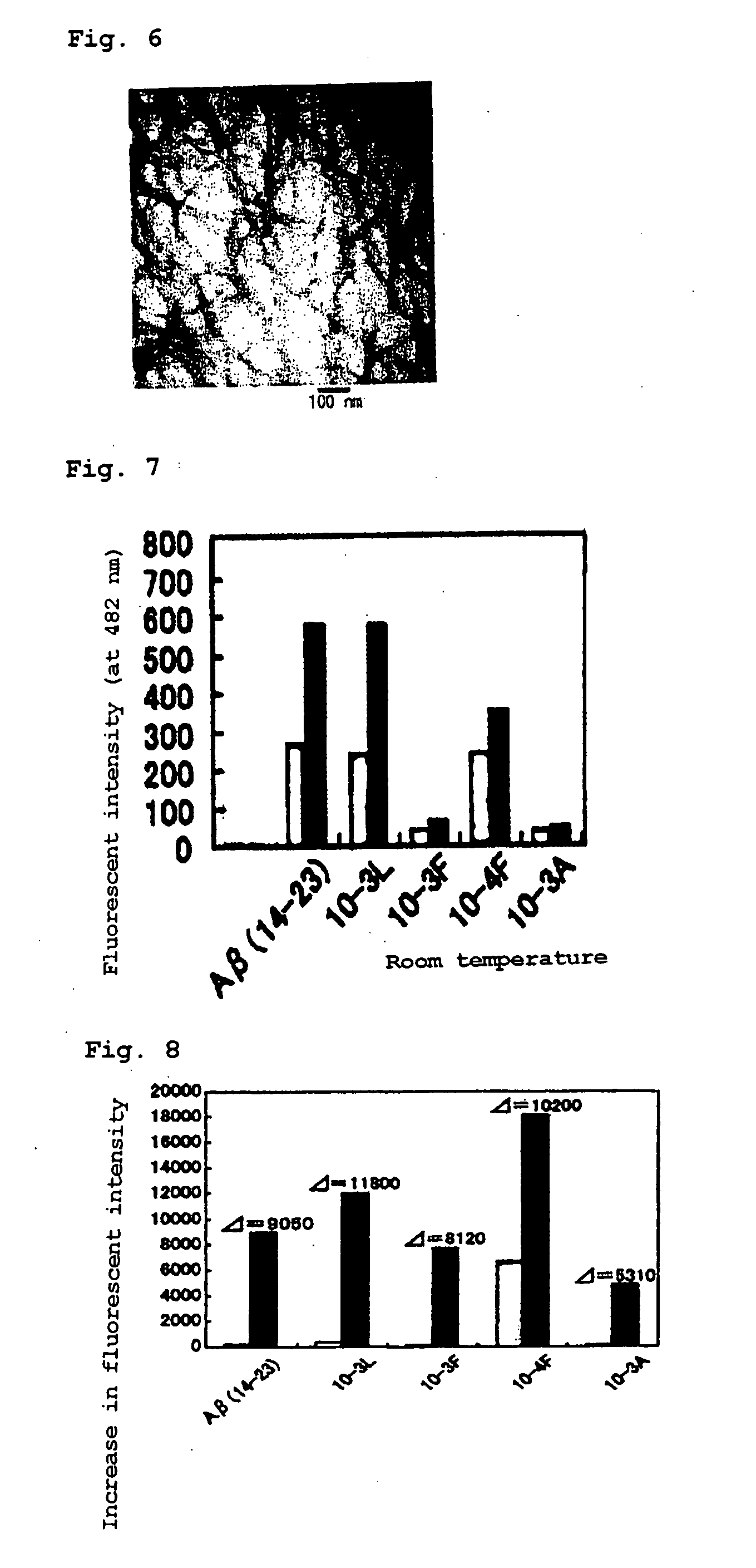Reagent for amplifying amyloid fibrosis of amyloid ss-protein
a technology of amyloid fibrosis and amyloid ss, which is applied in the field of amplifying amyloid protein, can solve the problems of severe dementia, obstacles in daily life, and obstacles in memory
- Summary
- Abstract
- Description
- Claims
- Application Information
AI Technical Summary
Benefits of technology
Problems solved by technology
Method used
Image
Examples
example 1
[0043]
(1) Synthesis of peptideAc-Lys-Gln-Lys-Leu-Leu-Leu-Phe-[peptide (10-4F)]Leu-Glu-Glu-NH2
(1-1) Reagents, Instruments / Devices
[0044] Fmoc amino acid derivatives, and resin as solid-phase carriers, were purchased from Novabiochem and used as they were. As other reagents, commercial products were used as they were.
[0045] The peptide was synthesized manually by an Fmoc (9-fluorenyl methoxycarbonyl) solid phase method. As a container for manual synthesis of the peptide chain, a polypropylene empty column (manufactured by Pharmacia Biotech) was used. An absorption spectrum was measured by using SHIMADZU BioSpc-1600 Spectrometer. In high-performance liquid chromatography (HPLC), HITACHI 7000 system was used. A mixed solvent of 0.1% TFA / H2O as solution A and 0.08% TFA / CH3CN as solution B was used as HPLC solvent, and eluted with a linear gradient of solutions A and B for 30 minutes. As a reverse phase column, Cosmosil 5C18-AR-2 (Nacalai tesque) (4.6×150 mm) was used at a flow rate of ...
example 2
(1) Amyloid Fibrosis by Using the Artificial Peptide Alone
[0067] The peptide (10-4F), (10-3L), (10-3F), (10-3A), Aβ (14-23) or Aβ (10-35) synthesized in Example 1, which was contained alone in an aqueous solution, was evaluated for its ability to form amyloid fibrils. The secondary structure was examined using a CD spectrum, and the ability to form amyloid fibrils was evaluated with dye thioflavin T (ThT) binding specifically to amyloid fibrils to emit fluorescence, under a transmission electron microscope (TEM).
(1-1) Measurement of the Secondary Structure of each Peptide by a CD Spectrum
[0068] Solutions of the respective synthesized peptides, 2 mM, in trifluoroethanol (TFE) were prepared and used as stock solutions respectively. Each stock solution was diluted to a final peptide concentration of 100 μM with 20 mM Tris-HCl buffer (pH 7.4), then incubated at ordinary temperatures, and measured for CD spectrum at 25° C. (FIG. 1).
[0069] As a result, 10-4F, 10-3L, 10-3F and Aβ (10...
example 3
[0119] A test for the amplification of fibrils of Aβ (10-35) formed into amyloid fibrils by using the artificial peptide of the present invention in Example 2 was attempted using a plate reader.
[Measurement Using a Plate Reader]
[0120] Incubation Conditions
[0121] Starting solution used: [peptide]=5 mM solution in DMSO
[0122] Concentrations: [peptide]=20 μM, [Aβ (10-35) (nucleus)]=2.5 μM [0123] (20 mM Tris-HCl buffer (pH 7.4))
[0124] Aβ (10-35) (nucleus) was homogenized by sonication for 1 hour before dilution.
[0125] Temperature: 40° C.
[0126] Measurement Conditions
[0127] Concentrations: [peptide]=18 μM, [ThT]=25 μM [0128] (20 mM Tris-HCl buffer (pH 7.4))
[0129] Sample volume: 200 μl
[0130] Temperature: 30° C.
[0131] Stirring conditions: The whole volume of the reaction mixture was stirred 3 times for 2 seconds with a vortex and then (100 μl×2) was stirred with a micropipette in a well before measurement.
[0132] Excitation wavelength: 440 nm, detection wavelength: 490 nm.
[0133] ...
PUM
| Property | Measurement | Unit |
|---|---|---|
| Hydrophobicity | aaaaa | aaaaa |
Abstract
Description
Claims
Application Information
 Login to View More
Login to View More - R&D
- Intellectual Property
- Life Sciences
- Materials
- Tech Scout
- Unparalleled Data Quality
- Higher Quality Content
- 60% Fewer Hallucinations
Browse by: Latest US Patents, China's latest patents, Technical Efficacy Thesaurus, Application Domain, Technology Topic, Popular Technical Reports.
© 2025 PatSnap. All rights reserved.Legal|Privacy policy|Modern Slavery Act Transparency Statement|Sitemap|About US| Contact US: help@patsnap.com



